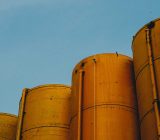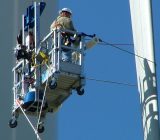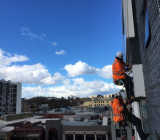A hazardous liquid is one that can:
• Pollute the environment
• Harm people’s health
All liquids can become hazardous when leaked or spilt. Even clean water can become a hazardous leak or spill if it washes pollutants into our waterways. The Environment Protection Act 2017 (EPA) defines environment protection laws in Victoria. It says it’s against the law to cause pollution. Groundwater pollution is also an offence under the Act. EPA can prosecute people and organisations who don’t comply with the law about hazardous leaks and spills.
HOW LEAKS AND SPILLS IMPACT OUR ENVIRONMENT:
Leaks and spills can pollute groundwater and surface water. This can be harmful to waterways and plants and animals that depend on them. Groundwater and surface water pollution can also impact people’s health. For example, if hazardous liquids end up in our food or drinking water.
Groundwater Pollution
Groundwater is found below the earth’s surface.
We use it for:
• Irrigating crops
• Drinking water for farm animals
• Drinking water for towns
• Recreational purposes – like the swimming pools industry.
Hazardous leaks and spills are a common cause of groundwater pollution. If a hazardous leak or spill pollutes groundwater, we may not be able to use it anymore.
Surface Water Pollution
Surface water gets pumped from rivers, streams and reservoirs. Most of our water supply comes from surface water. If a hazardous leak or spill pollutes surface water, it can make people ill.
PREVENTING LEAKS AND SPILLS
A hazardous leak or spill can happen at any business that works with liquids. Prevent and manage leaks and spills by:
1. Identify and Manage Risks
• Identify activities that could potentially lead to pollution from leaks and spills.
• Assess the risk from these identified activities.
• Implement controls to reduce risks.
• Regularly review controls to ensure they remain effective.
• Ensure the ERP covers what to do in a leak or spill emergency, and staff are familiar with it.
2. Use Secondary Containment Systems
Secondary containment systems should be used to prevent liquids from escaping if the original storage container or transfer mechanism fails. This can include bunds, encasement and grading of sealed surface areas.
3. Storing Liquids the Right Way
Avoid storing liquids where there’s a high risk of water pollution or land contamination. Store liquids on sealed surfaces in areas with covered roofing to exclude rainwater, and secondary containment.
4. Manage Sites
• Contain any spills or leaks.
• Manage outdoor areas to make sure only clean water leaves the site.
• Divert uncontaminated stormwater away from liquid storage areas.
• Regularly check containers and secondary containment for leaks.
HOW TO RESPOND TO LEAKS AND SPILLS
Generally, there are four basic steps involved with dealing with spills. While the specific actions related to each step may vary, as may the people responsible for handling each step, they form the basis of a spill response.
1. Notify and Communicate
Immediately notify others working in the area and any supervisory personnel of the hazard, and if the situation warrants it, evacuate the area. If possible, shut down any potential sources of heat or ignition.
2. Control the spill
Contain spill at source and reduce flow as required. Workers should immediately don appropriate PPE for the chemical and the nature
of the hazard. Increase ventilation to the area if that will safely disperse any fumes.
3. Contain the hazard
Use spill kits to control the spill and prevent it from spreading. Depending on the material and situation, this usually involves confining the spilled material to a small area by using some type of absorbent material or neutralizer. Spread these materials around the perimeter of the spill to prevent it from expanding and work your way to centre.
• Take special care to prevent the spill from spreading to floor drains or other places that may allow it to flow into environmentally
sensitive areas.
4. Clean up the spill and any damage Collect the material used to contain or neutralize the spill and dispose of it in the specified manner. If what you’ve gathered qualifies as a hazardous material, be sure to label it accordingly and dispose of it as specified by EPA regulations. More information can be found in the Absafe Emergency Response Plans
• HSE-PLN-001 Emergency Response Plans




